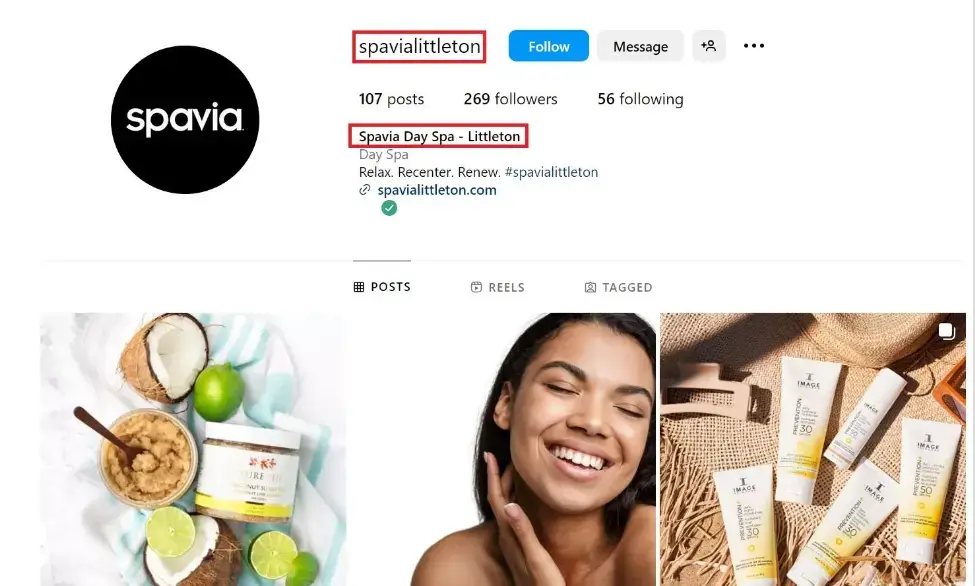Regularly evaluating your presence is necessary for any brand using social media channels to reach its audience.
You need to conduct a social media audit to determine whether or not you’re hitting your marketing goals. The audit also tells you what you’re doing right and what needs to be improved to ensure good social media visibility.
In other words, regular audits help ensure your social media strategies yield the best results. In this article, you’ll learn how to audit social media effectively.
What are the Steps of a Social Media Audit?
- Set clear goals and objectives
- Evaluate your social media profiles
- Analyze your audience and their engagement
- Review underperforming content
- Benchmark against competitors & industry standards

1. Set clear goals and objectives
Goal-setting is the natural first step to every successful social media audit. The social media marketing goals you set will determine the strategies you’ll follow in the first place.
Among other things, you may want to:
- Increase brand awareness
- Generate more leads
- Boost customer engagement
You can have one or more social media goals per platform. Make sure your goals are specific, measurable, achievable, relevant, and time-bound.
Having general goals will only leave you in limbo as far as goal attainment is concerned. SMART goals give you a clear picture of what you need to achieve.
They let you make data-driven decisions that promote business success.
So, what does a SMART goal look like? A SMART goal for your Instagram, for instance, could be to “gain 1000 more leads on Instagram by August.”
It is as opposed to the general goal “to generate more leads.” Once you’ve set your goal/s, you can determine the specific objectives you need to achieve to attain those goals.
For instance, if your intent on Instagram is to increase brand awareness, one of your objectives could be to gain more likes on Instagram. Another objective could be to increase your number of Instagram followers.
2. Evaluate your social media profiles
As a business owner, you’re probably using more than one social platform to market your brand. You’ll need to evaluate all your social accounts as part of your audit.
Begin by ensuring each social profile is complete. All the sections (bio, contact information, address, location) should have their corresponding information.
You may also include a link to your website to ensure you have all your bases covered. It is what IKEA does on its Instagram page:
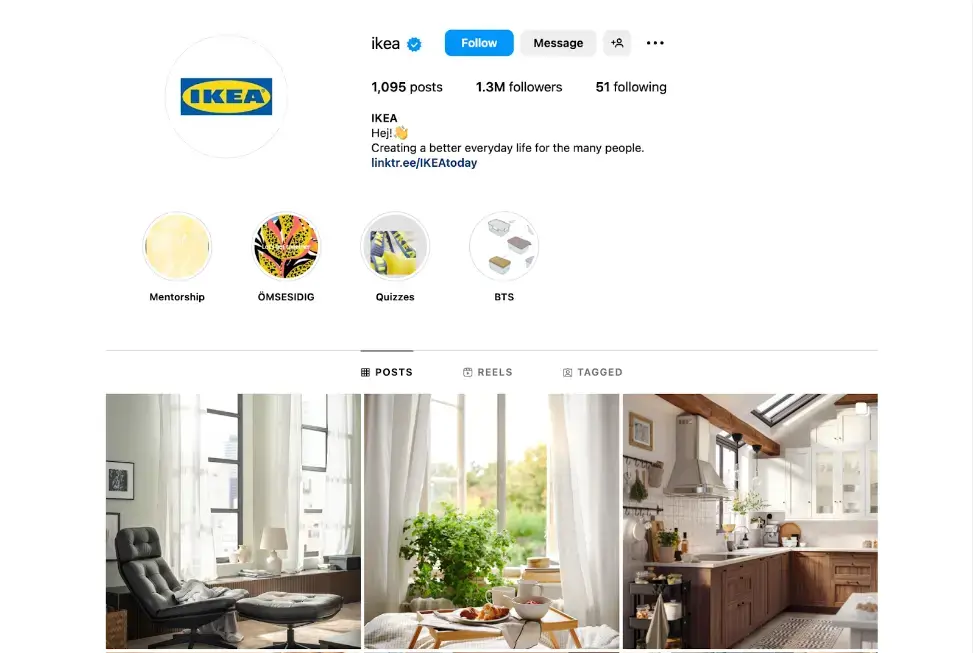
Next, check for branding consistency across your social media profiles. Around 70% of marketers say consistent branding is vital to communicating effectively with customers.
You aim to ensure a universal experience across your social channels for better brand recognition. That’s not to say you should post the same thing on all your social networks every time.
To ensure brand consistency, you only need to provide some critical elements of your social media profiles that are the same across platforms. Your usernames should be the same as much as possible. Your cover photo, logo, and bio should also be the same.
See below how Zoho has kept its branding consistent. Here is Zoho’s Instagram page:
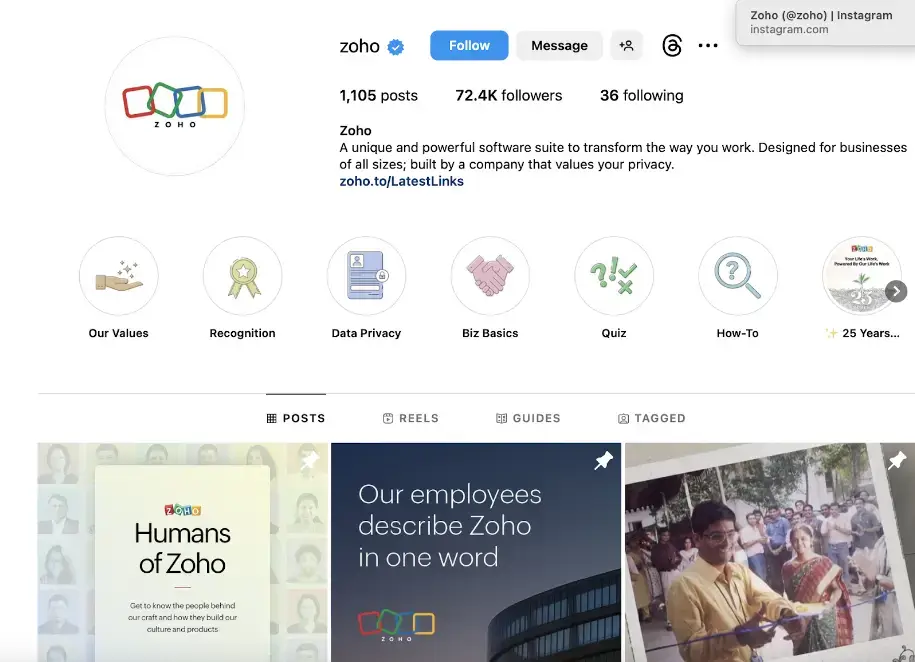
Now here is Zoho’s Twitter page:

As part of your social media audit, you may want to create a style guide if you haven’t done so already.
The style guide should specify which logo, profile picture, and bio should be used on all your social media platforms.
Just like designing a business card, this ensures your brand’s message is consistent and cohesive across all platforms.
This way, if you create accounts on other social media channels, you can still ensure branding consistency. Everyone on your team will be on the same page.
3. Analyze your audience and their engagement
Your social media audit should help you determine whether or not your content is resonating with your target audience in the first place.
Using in-built analytics tools, look into your audience demographics on each social media platform.
Do they have the same characteristics as the audience you had intended to reach in the first place?
If they match your buyer persona, your overall social media campaigns and content resonates with your intended audience.
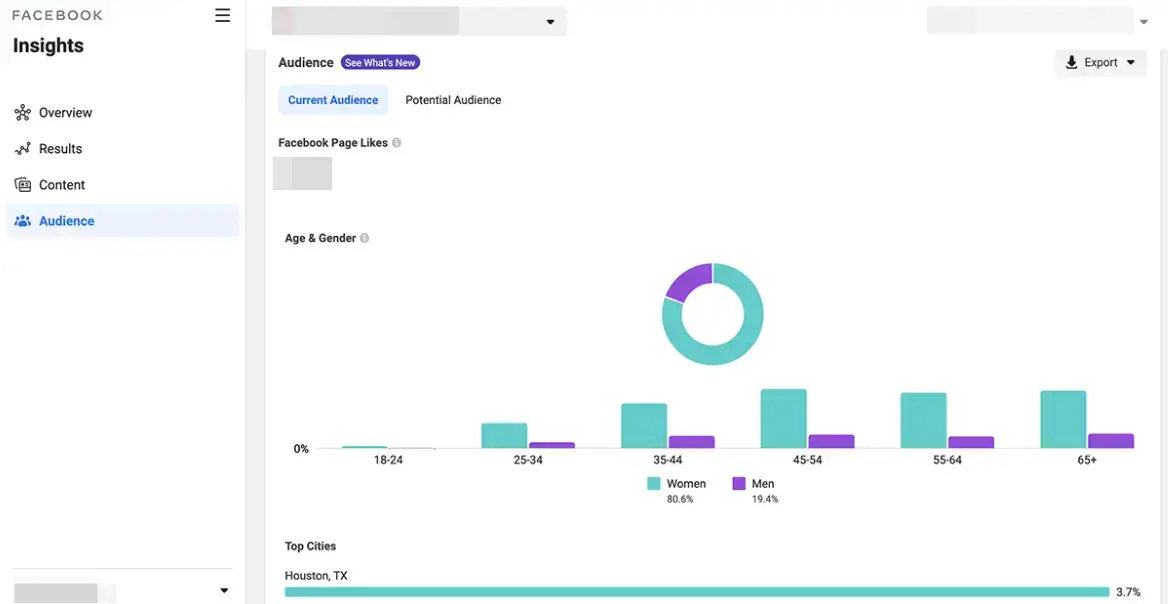
Using the same social media analytics tools, check when this audience is most active on the platform. It should inform your posting strategy on the channel.
Imagine a scenario where a restaurant business aims to enhance its digital engagement.
By utilizing in-built analytics tools across various social media platforms, the restaurant can delve into the demographics of its online following. This analysis involves a comparison of the audience characteristics against the initial buyer persona created.
Drawing parallels between the two signifies a successful content alignment with the intended audience. Which posts got the most likes, comments, and shares?
This way, the next time, you’ll know the content formats and topics to write about on your socials for maximum engagement.
If you want to get the most out of your social media audit, use the information you get about content performance to enhance your email marketing strategy.
Your subscribers are more likely to engage with content that already performs well on social media. Just verify email addresses to ensure your messages reach your intended recipients.
But let’s back up a bit. We’ve discussed what you should do if your current social media audience matches your buyer persona. What do you do if it doesn’t?
Now, envision a scenario where the current audience of the restaurant on social media deviates from its intended buyer persona, and the content resonates with the wrong audience.
Comparable to modifying its offerings to align with shifting tastes, the restaurant must revamp its social media content strategy.
It must return to the core buyer persona, reassess the pain points of its target audience, and craft fresh content that addresses these concerns from the ground up.
You might have to overhaul your social media content strategy, start from scratch, and create content that helps solve those pain points.
Ultimately, just as a well-curated menu caters to the culinary preferences of the restaurant's clientele, a meticulously planned restaurant social media calendar that aligns content with the expectations and preferences of the digital audience should be done.
The restaurant can seamlessly attract, engage, and satisfy its online patrons by conducting regular audits and adapting strategies accordingly.
4. Review underperforming content
Your social media audit should also include a review of your underperforming content. Check out which posts have the least likes, comments, shares, and retweets.
Then compare this underperforming content with your top-performing content.
What are their differences? Your social media post headlines may be longer in your top-performing posts than in your underperforming content.
Or you see that the posts your audience likes are longer and come with visual content. But don’t just look at the visual differences. Check out the differences in the content as well.
What specific topics are your underperforming content pieces touching on? How do they differ from the topics of your top-performing content?
You can note all these points when creating social media posts for your next campaign to ensure maximum engagement.
As part of your review, you’ll also want to see whether the images, video content, and graphics posted on each platform fit the platform. That can also be a reason the content doesn’t perform as well.
For instance, you have to make sure your YouTube content is long-form. If you have short-form content, TikTok is the best platform.
5. Benchmark against competitors and industry standards
As part of your social media audit, you want to see how you’re faring against other social media accounts, whether they’re your direct or indirect competitors and industry standards.
Find the profiles with the most engagement and identify what they’re doing right. These profiles don’t necessarily have to be in your specific niche.
Your goal here is to pick up on trends that might help improve your social media performance.
For example, some companies use their brand name as their Instagram account handle but change their Instagram name to include a target keyword.
The example below consists of a location, for instance.
You can then conduct your experiment based on what you find. In this case, incorporate a similar keyword into your social media profile name and see if it makes a difference.
Ensure you also check what your direct competitors do on social media. Using social listening tools, analyze your share of voice on social media and compare it with your competitors.
If users are talking about your direct competitors (in a good way) more than they’re talking about you, it means your competition is doing something right on social media.
So, you’ll want to emulate their social strategy. For this, check the following:
- Their current branding on platforms
- The types of posts and the topics they discuss
- How often do they post
Consider using a tool to help you track your competitor’s performance. Tools like Sprout Social, Socialbakers, and Sociality.io can give you valuable social listening insights.
You’ll also want to check each platform's average audience engagement rate and see how you’re performing against those rates.
For instance, recent research shows that the average engagement rate on Facebook is 0.07%.
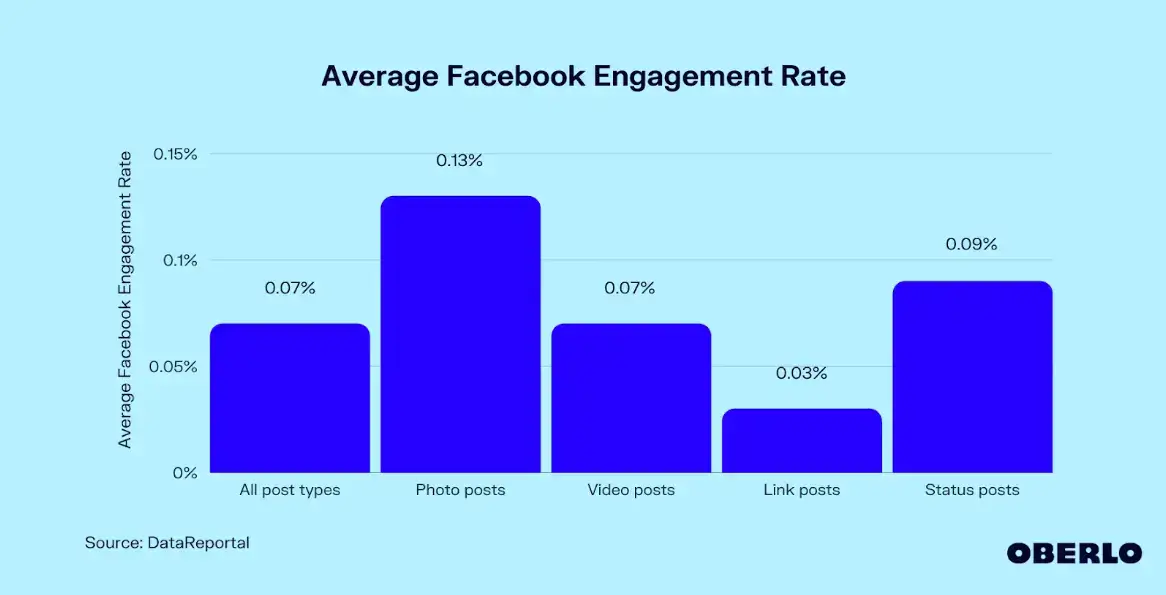
If your social media audit tells you your Facebook engagement rate is close to that figure, then you’re doing just fine. You’ll have to adjust your social media strategies if it's way lower.
In Closing
A social media audit is essential. When you know how you’re doing on your social platforms, you’ll know whether or not you’re hitting your goals and objectives in the first place.
As a result, you can make the necessary adjustments to your social media marketing strategies. You learned how to audit social media with this article successfully. Start by setting clear goals and objectives.
Evaluate your social media profiles and make sure all the sections are complete. Analyze your social media audience and how they engage with your content.
Also, review your underperforming social media content. Don’t forget to benchmark your social media performance against competitors and industry standards.
You’ll be well on your way to marketing success with an effective social media audit.
Author Bio
Owen Baker is a content marketer for Voila Norbert, an online email verification tool. He has spent most of the last decade working online for various marketing companies. You can find him in the kitchen mastering new dishes when he's not busy writing.



